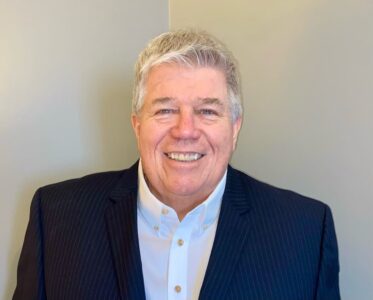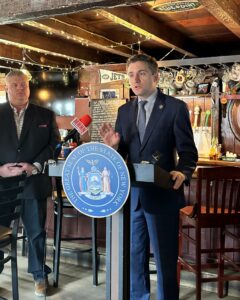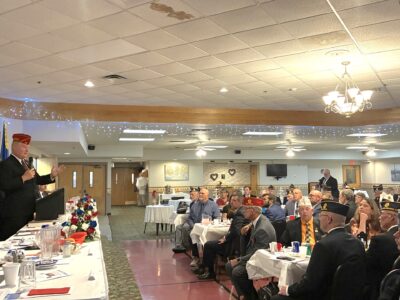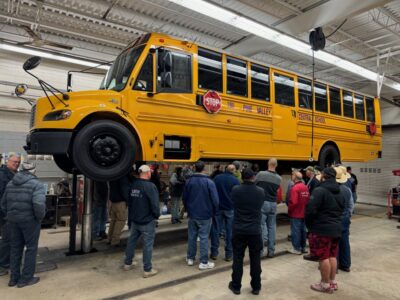Use Of Relief Funds Discussed By Council
It has been more than 200 days since the city of Jamestown received a portion of its allocated American Rescue Plan Act recovery funds.
To date, the city has spent none of it.
The topic of the funding — part of a $1.9 trillion plan by the federal government to provide direct relief to municipalities dealing with the COVID-19 pandemic — was discussed at length this week during a work session meeting of the Jamestown City Council.
The city has been slated to receive $28 million in funding, of which half was disbursed in May 2021 and the rest to be disbursed in 2022. Funding must be completely expended by 2026, according to the plan.
Jamestown Mayor Eddie Sundquist reminded members of the council that it has been 209 days since the city received the first portion of the ARPA funds.
“The other thing I just want to point out for the rescue plan funds,” he said, “I’m glad that we’re making progress on the master plan. It’s been 209 days since we received $14 million in the bank. At the end of this month, I will report to the treasury that we have spent $0 of it. So, we are required to report that at the end of the year for the quarterly report.”
Earlier in the meeting, Councilwoman Kimberly Eklund raised concerns regarding the movement of funds from one area to another once the plan has been voted on. She posed a question regarding the matter to the corporation counsel, Elliot Raimondo, asking for a legal opinion on the movement of funds, especially concerning the allocations for broadband in the city.
“I wanted him to answer that if there is a suggestion to move some monies — not necessarily fund the broadband, can we leave it in water and sewer or should we move it to housing and what is going to be the legality of us being able to do that?” Eklund asked. “Is the federal government going to say, ‘No, you earmarked it for that, it’s got to stay in there?’ I asked the corporation council to do a little research for us. Unfortunately … everyone has speculation. No one has a definite answer.”
In the master plan, the ARPA funding was divided into five sections: lost revenue; economic development; water, sewer and broadband; healthy communities and neighborhoods; and transparency and tracking. Allocations proposed for the timeframe from 2021 to 2024 included $10,179,145 for lost revenue; $10,000,000 for economic development; $2,000,000 for water, Sewer, and broadband; $5,000,000 for healthy communities and neighborhoods; and $900,000 for transparency and tracking.
Jamestown Mayor Eddie Sundquist said he could provide context on the issue.
“I just don’t want us to get locked into a position where we realize broadband was not equitable with the private sector in the business of it and now we’ve got it locked in,” Eklund said. “We could use it in water and sewer, but if that’s not a case where we could use that, that limits us and prohibits us from moving it out of that bucket. I don’t want to get locked in.”
Sundquist explained that a plan is not required by a municipality under the law regarding the ARPA funds if the municipality’s spending qualifies under the categories. He said the master plan is something other communities have done.
“It does not lock you in, you can move the categories later on,” he said. “This is a way for us to then let our departments know we are ready to create those projects, which ultimately each project and each program will come before a public body, and most all of them come before the city council except for the economic development, which will be the JLDC. Then, a project over $100,000 still comes before the city council. It’s like every other plan we adopt — this is a plan, this is an idea, this is how we want to spend it. But you can always move that funding around if you feel like, ‘Hey, there’s a better opportunity here.'”
Councilman Tom Nelson asked when the final decision would be made by the council regarding the ARPA funding. Eklund said the vote had to be made on the categories of spending first, then all projects would come before the council to be voted on separately.
“It’s going to be an ongoing budget thing,” she said.
Tony Dolce, council president, added that each month the council will most likely have a series of projects and other items coming before the members.
“Actually, President Dolce, there is a capital plan right in front of you guys,” Sundquist said. “The longer you wait on saying, ‘We’re OK with these,’ the longer it takes us to start working on those projects. This is lost revenue, which by law, can be used for any general service, so we estimated that to be about $10 million. We already can take 2020-21and apply these to capital projects, but we need an indication from you all on what those projects are going to be. If you wait and you want us to come each month with those projects, it’s just going to take so much longer. I can tell you one police car now is 18 months out.”
The police chief, Timothy Jackson, verified that it is taking a lot of time to receive police cars when ordered.
“I agree with you, and I understand that, but in all fairness, I think every council member deserves to look at everybody else’s option. To me it’s no different than a budget,” Eklund said. “I think you all deserve to look at this. What I would suggest is that you get your answers to the finance committee or myself directly what way you want to go, and I can narrow it down.”
Later in the discussion, Eklund brought up that the funding is COVID relief funding. She questioned whether the plan has any allocations that will do anything for the community to protect from a future pandemic or the ongoing COVID-19 issue.
“If you haven’t included that in here, I suggest you revisit that in the next week, because to me that’s important because the government is not going to say, ‘You’re going to get $28 million next time because you should have been better prepared.'”






